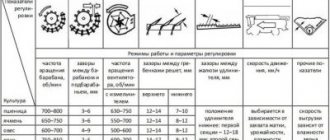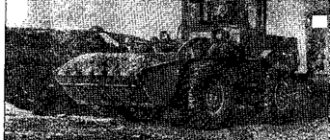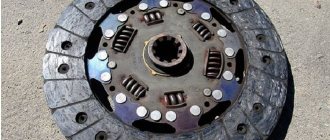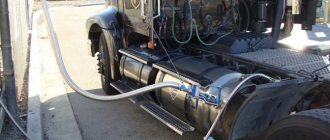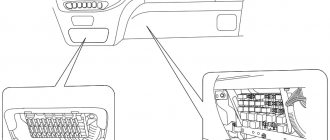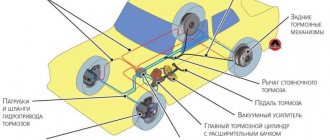How do hydraulics work? For centuries, people have known how to harness hydraulic power for everyday use. It is one of the most widely used and oldest forms of energy use. Its applications range from lawn watering to construction equipment and heavy machinery. It is so widespread that many households and offices may use hydraulic equipment on a daily basis. Engineers of the past created the basis for modern hydraulic systems to meet the needs of the modern world.
Who then invented hydraulics? It is difficult to determine who exactly invented hydraulic systems. Hydraulic systems were inspired by the work of great minds such as Leonardo da Vinci, Galileo Galilei, Blaise Pascal and Joseph Bramah, to name a few. Hydraulics found its place in the modern world during the Industrial Revolution, offering wide and effective applications.
With the beginning of the 20th century, new and varied applications of hydraulics emerged. Hydraulics are widely used in systems because they are adaptable, simple and flexible to use with different types of drives. High power density is one of the advantages of the system. Besides vehicles and industrial uses, you can find hydraulic systems everywhere. The most sophisticated machinery includes airplanes, space shuttles, construction equipment and elevators.
Technical conditions [up]
The production of hydraulic equipment, pumps and domestic hydraulic motors requires high precision and strict adherence to the technical conditions of their production.
The hydraulic system and its elements are constantly washed with mineral oil during operation. This promotes heat dissipation, removal of wear products, and the mating parts receive good lubrication. Therefore, by promptly servicing drive elements and replacing spent working fluid, we create all the conditions for a reliable and long service life of the hydraulic drive. If various types of defects were made in the manufacture of hydraulic drive elements, then malfunctions may occur in the operation of the hydraulic systems, which may appear during the operation of a particular unit or due to violations committed during the maintenance of the hydraulic drive - insufficient filtration of the working fluid when filling the hydraulic system.
What malfunctions can occur in the operation of a hydraulic drive? What are the reasons for their occurrence and how to troubleshoot?
Why do you need hydraulics in a car?
The hydraulic system combines a number of devices designed to transfer energy between machinery mechanisms using a working fluid that moves under pressure. This equipment is widely used in modern special equipment and vehicles:
- Excavators;
- Dump trucks;
- Bulldozers;
- Forklifts;
- Agricultural machinery;
- Municipal vehicles;
- Oil production equipment;
- Equipment for residential and road construction;
- Lifts;
- Automobile transport;
- Air transport;
- Watercraft and other types of transport and specialized equipment.
Let's consider the use of hydraulics using the example of a tractor. Hydraulic equipment is used in large-capacity vehicles for easier loading and unloading of goods, as well as convenient connection of trailers and attachments. In addition, hydraulics in trucks make it possible to tow other vehicles using special devices.
If the factory design does not provide for hydraulics, the equipment can be installed after the machine or equipment leaves the conveyor. This procedure is called hydrofication, and it is performed by many companies involved in the repair and maintenance of hydraulic systems.
The hydraulic motor did not start moving after turning on the hydraulic drive [up]
There may be several reasons due to malfunctions within the hydraulic system itself:
No pump flow
Such a malfunction can be caused by the wrong direction of rotation of the hydraulic pump drive shaft. It needs to be checked and the pump reversed. If this is not the reason, then you need to check the level of working fluid in the tank and, if necessary, add clean oil.
Also, lack of pump flow can be caused by a clogged filter or the suction pipe itself. In this case, it is necessary to replace the filter or clean the pipe.
If there is an air leak in the suction hydraulic line or the seal of the hydraulic pump is broken, then it will also not pump liquid. In this case, you need to check the strength of the connection between the suction pipe and the pump, as well as the installation height of the suction pipe, which should be lowered below the oil level. Do not forget about the tightness of the pump suction cavity. If it is broken, it must be restored.
For a domestic hydraulic pump to work well, the viscosity of the liquid must meet the required conditions. If it is very large, it needs to be replaced.
No required pressure.
The required pressure is directly related to the pump flow. If it is not there (for reasons already discussed), there will be no pressure either. The malfunction may be caused by incorrect pump relief valve setting, pump wear, large leaks in the pipeline, faulty pressure valve, excessive leaks in the hydraulic motor, etc. It is necessary to ensure that the pressure safety valve is set to a pressure that exceeds the operating pressure by 10-15%. If during checking the pressure is lower than required, then tighten the valve adjusting screw and increase the pressure.
Significantly reduces the hydraulic pump's flow rate and its wear. Therefore, the pump flow must be measured at idle and under load. If the flow rate of the controlled pump is lower than the nominal one, you need to replace the pump with a new one.
Particular attention is paid to large leaks in the pipeline due to poor fit of pipe connection elements or rupture of their walls. Therefore, it is necessary to inspect the pipelines, check the tightness of the connections and, if necessary, eliminate the cause of leaks of the working fluid.
Pressure valve failure is often caused by the valve plug (plunger) being stuck open. To fix this problem, you need to disassemble the valve and eliminate the cause of the jamming (contamination, misalignment, broken spring, etc.).
What can cause increased leaks in a domestic hydraulic motor? The reason is significant wear of its parts or failure of sealing elements. It is necessary to replace the engine or worn parts with new ones.
Hydraulic distributor malfunction.
This malfunction can be caused by a break in the electrical circuit for turning on the magnet for controlling the position of the distributor plunger or a break in the electromagnet coil, jamming of the electromagnet core or the distributor plunger itself, as well as the possible simultaneous activation of both control electromagnets (if the distributor is controlled by two electromagnets). The breakdown can be eliminated by checking the serviceability of the electrical control circuits of the distributor or by disassembling the distributor and adjusting its operation.
Obstacle in the path of the hydraulic motor.
A serious obstacle to the movement of the hydraulic motor can be a foreign object on the guides along which the machine unit moves under the action of the hydraulic motor, any misalignment that causes jamming of the piston in the cylinder, breakage of hydraulic motor elements, etc., as well as excessive tightening of guide bars or wedges, according to by which the hydraulically driven unit moves. In such cases, it is necessary to inspect the drive and troubleshoot the problem.
The machine unit does not reach the end of its stroke [top]
This is another one of the most common malfunctions when a machine unit driven by a hydraulic motor, which began to move, failed to reach the end of its stroke. Among the most common reasons are the following:
Obstacle in the way of movement
When mechanical obstacles arise in the path of the unit’s movement, as in the case discussed above. The steps are similar.
Spontaneous switching of the linear hydraulic distributor.
Such a problem can occur if the latch fails (if there is one), a failure in the control system that sent an erroneous signal to switch the distributor, a loss of voltage at the hydraulic distributor control solenoid, or as a result of a breakdown of the distributor itself;
Pressure drop in the pressure hydraulic line feeding the hydraulic motor.
There are several reasons: due to lack of pump supply, incorrect setting of the hydraulic pump safety valve, wear of the pump, large leaks in the pipeline, malfunction of the pressure valve, increased leaks in the hydraulic motor, etc.
Hydraulic distributor malfunction.
Jamming of the hydraulic distributor plunger (spool valve) or failure of the return spring can lead to malfunction of the hydraulic distributor itself.
Open circuit in the electromagnet power supply.
To eliminate a break in the power supply circuit of the electromagnet that controls the hydraulic distributor, or a break in its coil, it is necessary to check the serviceability of the electrical control circuits of the distributor or disassemble the distributor and adjust its operation.
Blaise Pascal – Father of Hydraulics
Blaise Pascal (1623-1662) was a French mathematician, physicist, inventor, philosopher and writer. He made significant contributions to science throughout his life. Pascal made contributions to several areas of physics, most notably fluid and pressure mechanics. In honor of his scientific contributions, the unit of pressure (SI) and Pascal's law were named accordingly. Pascal developed the theory of probability, which became his most influential contribution to mathematics.
One of his most famous statements is known as Pascal's principle, which states that -
“The pressure exerted on a liquid that is not compressed and is in equilibrium in a vessel with non-deformable walls is transmitted with equal intensity in all directions and at all points in the liquid.”
His work in fluid dynamics and hydrostatics focused on the principles of hydraulic fluids. He invented the hydraulic press, force multiplied hydraulic pressure, and the syringe used in medicine. He proved that hydrostatic pressure does not depend on the weight of the liquid, but on the difference in height.
Noise increase [up]
A sharp increase in noise during operation of the hydraulic system also indicates a malfunction in the hydraulic system. Failure to correct this problem in a timely manner can lead to breakdowns of the hydraulic system and failure of the entire hydraulic machine.
The reasons are as follows:
Clogged suction filter or suction pipe.
Troubleshooting: Check the filter and pipe and clean them.
Air leakage during pump operation.
The cause of the noise is possible air leakage during pump operation (in the suction pipe or in the pump itself). This may be due to insufficient oil level in the hydraulic tank and it should be increased, or due to faulty pump sealing elements that need to be replaced.
Supply of working fluid with air bubbles.
To prevent air from getting into the oil, it must be changed on time. Because over time, oil loses its performance due to aging or oxidation. Oil foaming is possible due to improper installation of the drain pipe or insufficient oil level in the hydraulic tank.
Failure of the breather in the hydraulic tank.
If the breather in the hydraulic tank fails, this may disrupt the normal ventilation of the tank. To eliminate this breakdown, you need to check the breather (air filter) and, if necessary, clean it or replace it with a new one.
Noise from the pump.
Excessive noise during pump operation is a signal to check the reliability of its attachment to the drive motor. It also doesn't hurt to check the pump itself. Breakage of its parts is possible.
Excessive noise when operating the pressure valve.
More often than not, a malfunction or incorrect selection of valve type (for example, selecting a direct acting valve instead of an indirect acting pressure valve) can cause excessive noise when the pressure valve operates.
Vibrations.
Vibration of pipelines and equipment can be caused by loose fasteners. The apparatus and pipe mounting brackets must be carefully secured.
Turbulent flow in a pipeline.
If a turbulent flow of the working fluid occurs in the pipelines, this may indicate that the diameter of the pipes was selected too low, the presence of kinks in the pipelines or their deformation. Therefore, it is necessary to inspect the pipeline and eliminate the causes of flow turbulence.
Uneven movement of the hydraulic motor [up]
A significant drawback of the hydraulic drive is the uneven movement of the hydraulic motors.
The reasons are:
Air in the working fluid.
If there is undissolved air in the form of bubbles or air pockets in the working fluid, this can cause uneven movement of the hydraulic motors. It is necessary to bleed air from the hydraulic system while idling (for example, by loosening the pipeline connections).
Uneven supply of working fluid.
Uneven supply of liquid by the pump can be caused by breakdown of its working parts, accompanied by increased noise of the pump.
Poor lubrication of guides.
Excessive tightening or poor lubrication of the guides along which the actuator driven by the hydraulic motor moves can cause uneven movement of the hydraulic motor.
Incorrect safety valve setting.
Setting the safety valve to a pressure close to the operating pressure may cause liquid to drain into the tank when the operating pressure fluctuates.
Incorrect installation of the hydraulic motor.
If the hydraulic motor is installed incorrectly (misaligned), it may cause it to move unevenly. To prevent this, you need to check its installation.
Lack of necessary pressure.
One of the reasons for the uneven movement of the hydraulic motor may be the lack of the required back-up pressure in the drain hydraulic line, which arose as a result of alternating load on the engine.
Is it worth making a manual hydraulic pump yourself?
At the moment, hand-made pumps are almost never found. Despite this, you can make a hydraulic pump with your own hands. We will need a steel tank. The body will be made from it. To control the pressure in the tank you need a valve. It needs to be secured at the top with a washer. A lever is installed to control the closing valve. A cast iron pipe may be suitable. Use a pressure gauge to monitor pressure. In the end, you will end up with a device that will not withstand pressure of more than 4 atmospheres. With all this, a homemade hydraulic pump will take up a lot of space and be inconvenient to carry. The disadvantage of homemade hand pumps is their low efficiency; quite a lot of force will be required to activate the pump. Also, homemade devices are very unreliable. And if you take into account all the disadvantages, then spending resources on creating a homemade manual hydraulic pump is very ineffective. That is why they are not common.
Increased heating of the working fluid [top]
Increased heating of the working fluid indicates a malfunction of the hydraulic system. This may be caused by the following problems:
Malfunction of the cooling system.
In this case, it is necessary to check the operation of the temperature control equipment and the circulation of the coolant.
Increased pressure in drain hydraulic lines.
If increased pressure is detected in the drain hydraulic lines, check the setting of the hydraulic valves.
Incorrect pump selection.
An increase in the temperature of the working fluid can occur if the pump is incorrectly selected with a flow significantly higher than that required for the operation of the drive.
The overflow valve is not correct.
If the overflow valve provided by the indirect-acting safety valve does not operate in the pump unloading mode, check the operation of the unloading device. If necessary, you can clean the jets (dampers) of such a device. If there is no unloading mode when the hydraulic motor is stopped, it is necessary to provide unloading of the pump when the engine is at rest.
Pump classification
What is a pump?
Just like your heart pumps blood throughout your body, a pump is the heart of a hydraulic system. A pump is the part of the system that pumps oil to do work. As we wrote earlier, a hydraulic pump converts mechanical energy into pressure energy and kinetic energy of the fluid.
What is a hydraulic pump?
Each pump creates a flow. Liquid moves from one place to another. There are two types of displacement pumps:
— Forced action pump
— Non-forced pump
The water circle in the picture is an example of a non-forced pump. The circle picks up the liquid and moves it.
Another forced action pump. It is called forced action, since the pump pumps liquid and prevents it from returning back. If the pump cannot do this, there will not be enough pressure in the system. Today, all hydraulic systems use high pressure and thus positive action pumps are required.
Decrease in hydraulic motor speed [up]
A drop (decrease) in the speed of movement of a hydraulic motor under load can be caused by the following reasons:
Fluid leak in the hydraulic system.
If you find increased fluid leaks in the hydraulic system, pay attention to the wear of the hydraulic system elements. Failure of sealing devices or a decrease in the viscosity of the liquid due to overheating is possible. You need to find these problems and fix them.
Contamination of the working fluid.
Contamination of the working fluid leads to clogged filters. It is necessary to change the oil, clean the hydraulic system itself, and also change the filter elements.
Clogged slits of throttling devices and valves.
Decrease in hydraulic motor speed [up]
The speed of the hydraulic motor can be significantly reduced due to clogging of the slots of the throttling devices and valves. It is important to check their operation and correct problems if necessary.
Malfunction of flow regulators.
If the operation of the flow regulators, designed to stabilize the speed of movement under variable load on hydraulic motors, is unsatisfactory, their operation should be checked and, if necessary, the flow regulators should be repaired.
External leaks of working fluid [top]
External leaks of working fluid in hydraulic engines can directly indicate problems with the hydraulic systems.
Causes:
- misalignment of the covers when tightening them;
- rupture of elastic sealing elements of covers;
- seal wear;
- the appearance of burrs and scratches.
- The appearance of scuffs, scratches and other damage on the elements of hydraulic motors, leading to the penetration of working fluids outwards. Periodic inspection of the hydraulic motor and its timely maintenance will prevent possible problems. Eliminating these leaks involves, first of all, replacing sealing elements and devices.
There are other malfunctions in the operation of hydraulic systems. For example, an increase in pressure in the pressure hydraulic line, uncontrollability of movement speed, etc., which arise due to the failure of devices or due to their incorrect adjustment or configuration.
Our offer
Order hydraulic equipment from. The entire instrument meets the most stringent specifications in terms of amplitude and frequency for various characteristics. Excellent sensitivity, extremely high piston speed, durability and economy are the result of accumulated experience, know-how and high quality.
We offer hydraulic tools for various purposes. The entire list of equipment is supplied directly from the manufacturer. We have the best prices in the region. Our catalog contains only original equipment that has passed strict quality control.




